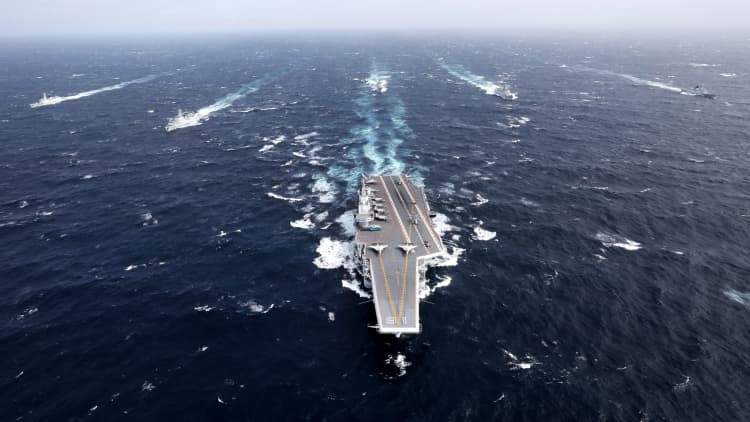The U.S. Navy exercise in the disputed South China Sea over the weekend was about "showing the flag" and sending a message to the region, an expert told CNBC this week.
Two U.S. aircraft carriers conducted operations and exercises in the contested waters on the Fourth of July "in support of a free and open Indo-Pacific," the Navy said in a statement.
Beijing also carried out military training in the South China Sea from July 1 to July 5.
"The U.S. wants to send a message that it's not backing down, and that it's still able to do this," said Gregory Poling of the Center for Strategic and International Studies.

Poling, who is the director of the Asia Maritime Transparency Initiative at CSIS, said there had been a lot of "bad press" in China about the United States being unable to keep up carrier operations because of the Covid-19 pandemic.
"This is about the U.S. saying that we are still in the region," he told CNBC's "Squawk Box Asia" on Monday.
The South China Sea has been a point of dispute for Beijing and Washington because China is aggressive in claiming much of the region as its own territory, while the U.S. promotes freedom of navigation along the sea route. Countries including the Philippines, Taiwan and Vietnam have also laid claim to parts of the waterway.
The United States' latest moves are "definitely" a message to the region, he said. Poling noted that a lot of allies are "very nervous" because China has been "pushing on all fronts" over the past few months. That includes along its border with India, across the strait with Taiwan, in the East China Sea and the South China Sea.
"(They) want to know whether or not America still has the backbone for this," he added.
While aircraft carriers probably have "very little to do with a modern fight" in this region, "this is about showing the flag," Poling said.
Asked about the possibility of a miscalculation, he said the odds are low because neither the U.S. nor China want a fight, but it cannot be entirely discounted.
Beijing's efforts to stop U.S. freedom of navigation operations have become "more and more aggressive," and China is "highly sensitive" to perceived weakness because of the coronavirus, he said.
On the other hand, the U.S. is "committed to not being seen as a paper tiger," he added. "There's a small but non-zero chance of accidental escalation."
— CNBC's Yen Nee Lee contributed to this report.


